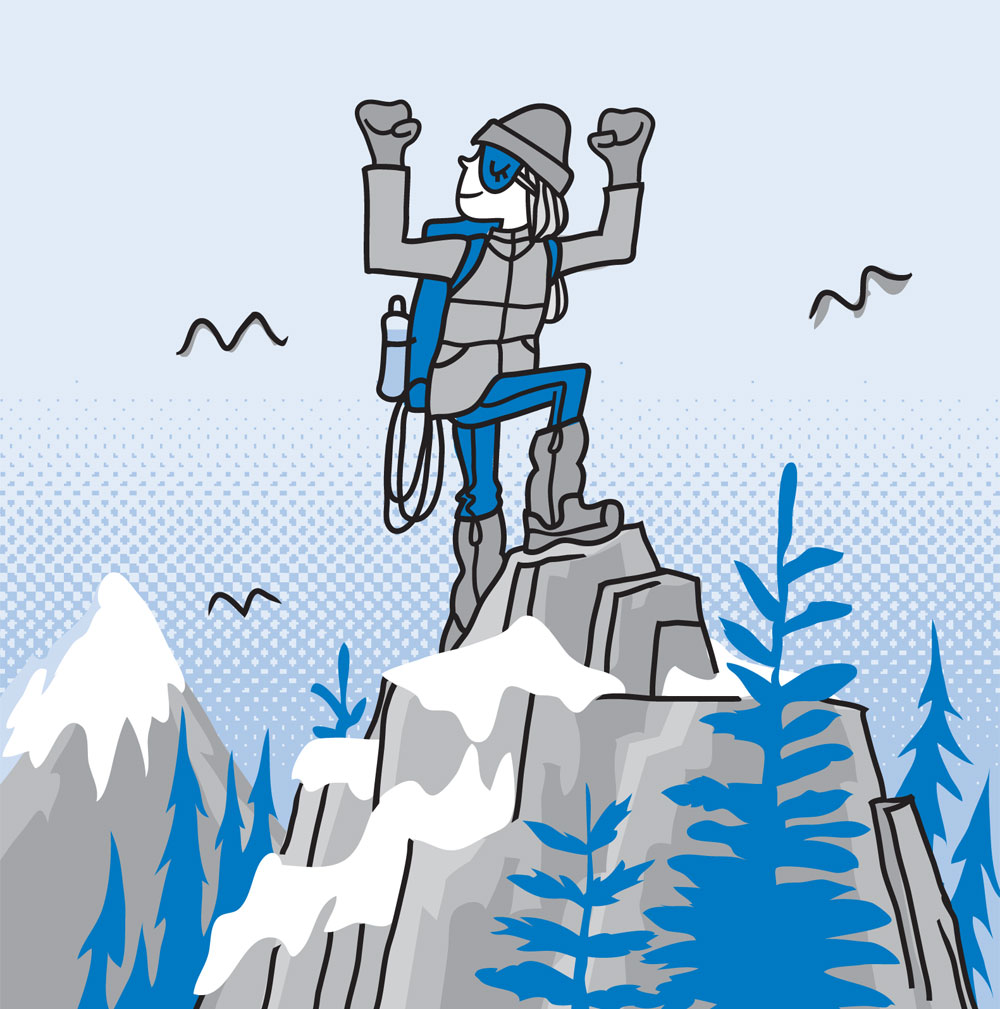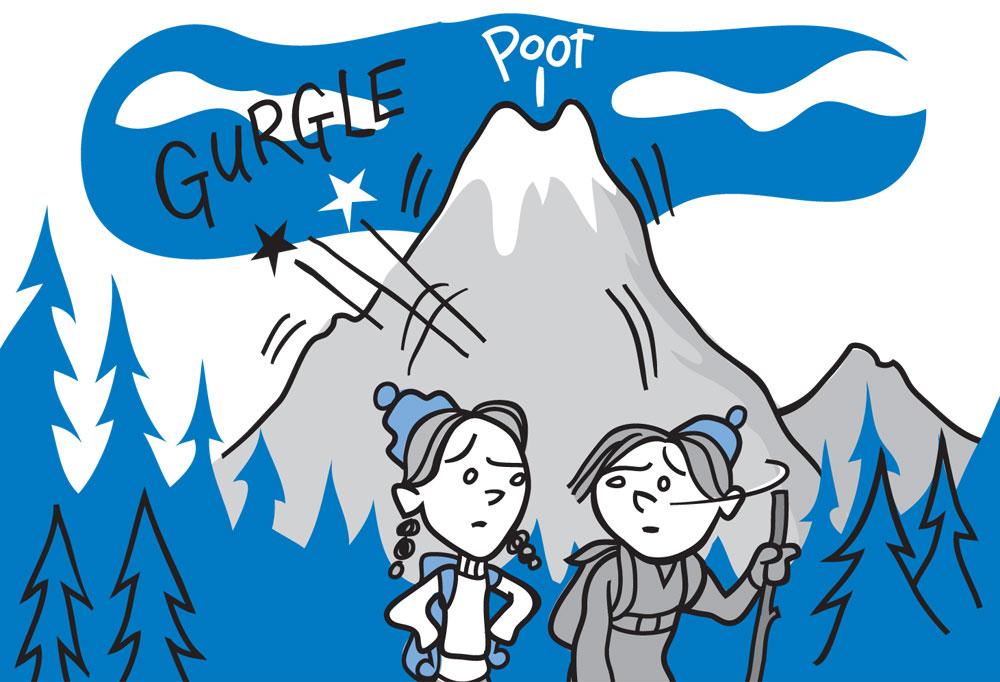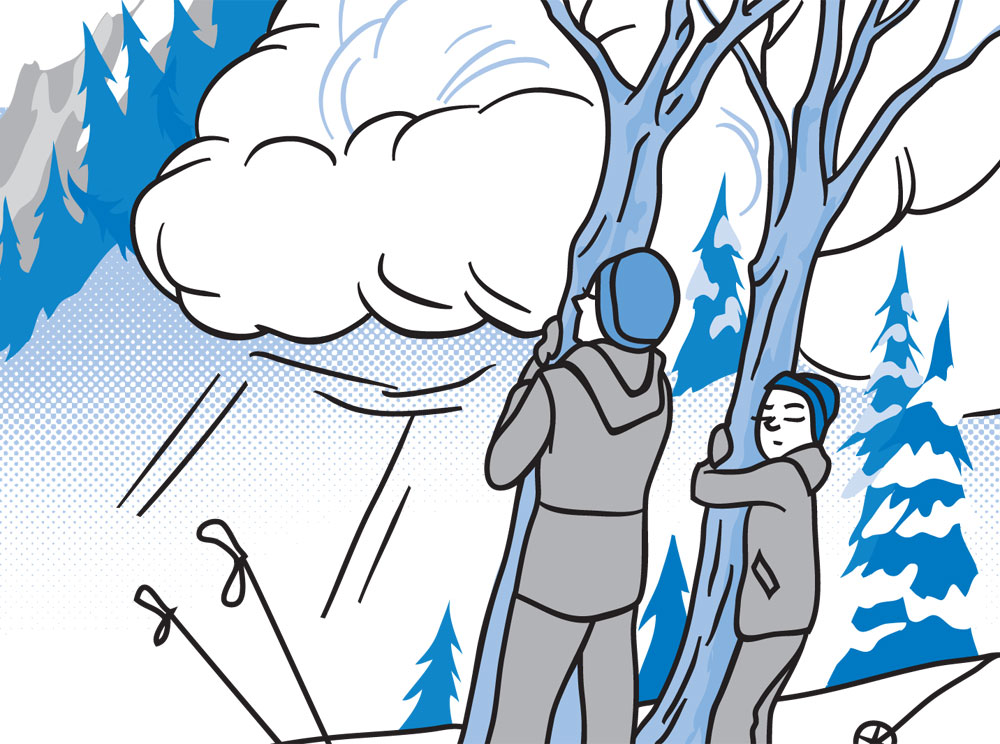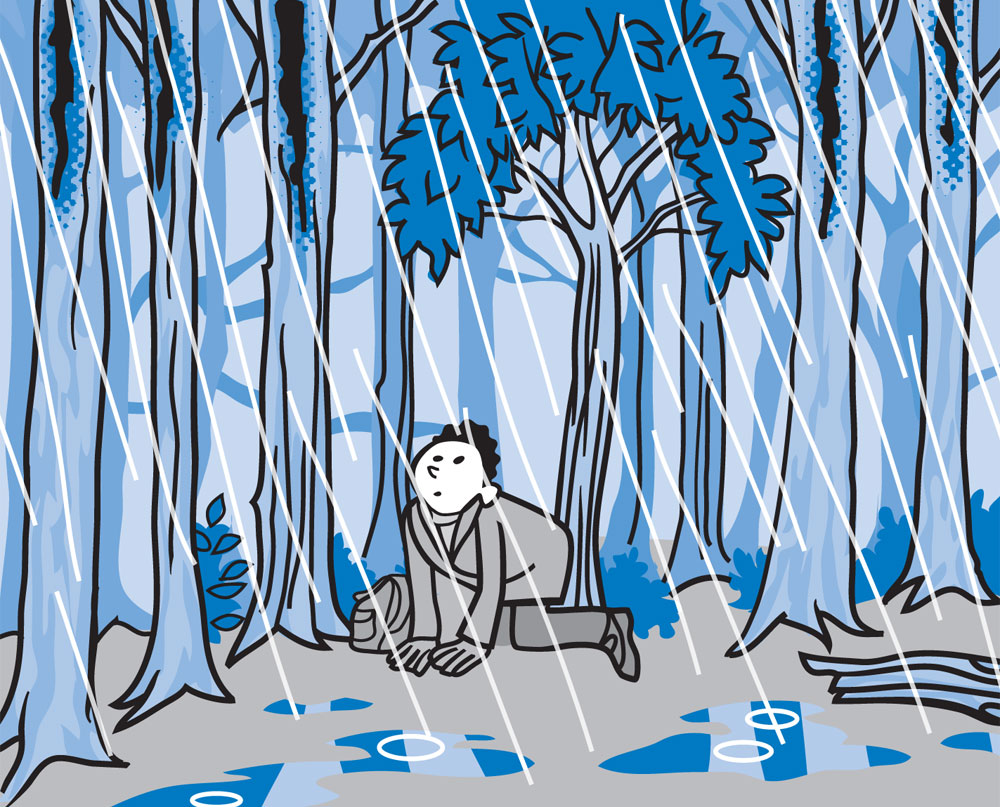

A volcanic eruption is basically a mountain throwing up. Things have been gurgling around inside for a while, and suddenly—SPEW!—a mess of liquid, solids, and gas is vomited out in a fiery mess. And this stuff really burns. Here’s how to make sure that spew doesn’t get on yew.

1 Look out—it’s raining rocks.
When you think of an erupting volcano, you picture red hot lava flows dripping off a mountain like melting ice cream. But along with the rivers of fire, there are rocks being spit high into the air. If you’re anywhere near a mountain that’s blowing chunks, take cover if you can, and roll into a ball to protect your head.
Oh wait, the hills are on fire. That’s not such a good idea. If the lava is headed your way, get out of its path as fast as you can. If you can put a ditch—or better yet, an entire valley—between you and the flow, so much the better.
3 Get inside.
Boiling lava on the ground, rocks raining from the sky? Time to seek shelter. Get inside—anywhere will do—as fast as you can, and try to get to a high story. Close all doors and windows. Don’t open the door, not even if the lava knocks politely.
4 Up, up, and away.
Another nasty thing about a volcanic eruption is the mix of deadly gases that are belched forth. Carbon dioxide gas is the worst of ’em, and because it is denser than air, it will collect near the ground, so start climbing—stairs, furniture, whatever will keep your head above the murk.
Imagine being hit by a snowball as big as an ocean liner. That’s what it feels like to be in an avalanche, and it’s clearly a fight you want to avoid. But if Mother Nature throws the first snowball, staying on top of it (literally) is your best shot at riding to safety.

1 Brace yourself for impact.
If an avalanche is heading your way, don’t let your jaw drop in shock—keep your mouth closed tight so you won’t choke on snow. If you have ski poles, drop them (they can be dragged away, pulling you down), and crouch behind a tree or find shelter ASAP.
2 Ride the wave.
As the avalanche starts to close in around you, stay on top of the sliding snow by swimming in a freestyle (crawl) motion, using your arms and legs to keep you on the surface. It’s the ultimate in bodysurfing.
3 When in doubt, spit.
If you end up in the middle of a snow cone, you need to find the surface. If you can’t tell which end is up, dig a hole around you and spit. Your loogie will head downhill and give you an idea which way is up. Cool, huh?
4 Dig up.
Dig toward open air. Dig quickly, or someone may discover you in 2,000 years in the ice and say, “Wow, look at that perfectly preserved expression of panic!”
For the most part, bears just want to live an easy country life. However, in certain situations, they can get testy. Like when they’re protecting their cubs, feasting on deer, or when their houses have been broken into and vandalized by little blond girls who eat their porridge. Here’s how to show bears the respect they deserve.
1 Sing out loud, sing out strong.
You don’t want to freak out a bear by surprising it. As you hike, make noise by talking, singing a little forest karaoke, or by having a fascinating conversation with your echo. You could also fasten bells to your shoes or hat. Any sound will clue the bear in that you’re coming, so it can choose to avoid you. That’s the best-case scenario!
2 Keep your distance.
If you spot a bear, hold very still, and wait for the bear to go on its merry way. If you can, back away s-l-o-w-l-y to get more distance from the bear.
3 Know who you’re dealing with.
Check if the bear is black or brown. Black bears are the most common in North America, but if you’re in western North America, you might encounter a brown bear (like the grizzly or Kodiak). Coat colors can vary, though, so if you hike in a region with both black and brown bears, learn all the ways to tell the difference before you head out.
4 Play tricks.
If the bear is a black bear, and it’s starting to charge you from afar, wave your arms and make noise—the bear will think you’re bigger than you are and will back off. If it’s a brown bear, curl up and lie still—playing dead will hopefully cause the bear to lose interest.

Have you seen those “storm chasers” on TV? Those crazy folks who drive into the eyes of hurricanes? Do not try that at home! But even if you’re not chasing storms, sometimes they’ll chase you. Here’s how to win this game of tag.
1 Stormwatch.
You love nature—if there are a few black clouds overhead, a little torrential downpour, so what? Lightning, however, is a different story, and you need to be aware of the signs when a storm is so close, you could be stuck:
• A buzzing sound. This is the sound of static electricity caused by tiny particles called electrons dancing about.
• A sudden gravity-defying change in your hairstyle. Your new ‘do is the result of electricity in the air and in your hair!
• A halo of light around people or trees. No, you’re not seeing things—well, actually you are, but it’s a real phenomenon known as “St. Elmo’s Fire.” The high voltage in the air reacts with the gas around objects and people to create the glow. Pretty cool.
2 Do the math.
Arithmetic may be the last thing on your mind at a time like this, but a little division can help you figure out how close to you the storm is. When you see lightning, count the number of seconds until you hear thunder. Then divide by five. That’s how far away the storm is in miles. Get to a safe place immediately if the thunder snaps, crackles, or pops less than 30 seconds after the lightning. A storm even 6 miles away is within lightning-strike range. (It doesn’t have to be raining on you for lightning to find you!)

3 Heavy metal?
Take off backpacks with metal frames and any jewelry. That navel piercing makes your belly button a bull’s-eye. Tall things and metal objects are what lightning likes. That’s why telephone poles aren’t good hiking buddies.
4 Gimme shelter (the right kind).
If you’re in the forest and there are trees all around you, choose the shortest one and crouch under it, so you’re the shortest thing in the area. If a tree has a lightning scar (usually a vertical patch that’s been cut out of the tree or is covered in new, lighter bark), stay away—lightning can actually strike the same place twice. Stay away from isolated trees, metal fences, and bodies of water. All of these can attract lightning strikes.

Ah, the peaceful sounds of the mountainside—birds calling, the wind in the trees, the low growl of a mountain lion—uh-oh. Here’s how to stay safe in cougar country.
1 Don’t be a copycat.
When you’re near mountain lions (also called cougars and pumas), don’t be a copycat; if you don’t do like the big cats do, you’ll be less likely to meet one. Don’t hike at dusk or dawn (when they’re on the prowl). If you see scratch marks on the trees, don’t think, “Time to sharpen my fingernails.” And definitely don’t kill and eat a deer.
2 Run away? Not today.
Not to sound like the annoying lifeguard, but upon sighting a mountain lion, please do not run. If you run, it is likely to chase you. It’s got four legs to your two. It’s a lot faster than you. Don’t find out the hard way.
You want to appear like a big ferocious animal so the lion doesn’t think you’re some easy-to-chomp little morsel. Look as big as you can. Stand up straight. Flex those muscles! Wave your arms over your head. Spread out your jacket like a king cobra. Bare your teeth and make some noise, y’all!

If your tough-guy act doesn’t petrify the puma, then you need to make the first move to break up this unhealthy relationship. Standing tall, slowly back away from the mountain lion.
5 Throw up.
This lion is not getting the hint; instead of walking away, he’s stalking today. He’s looking intently at you and crouching. You need to make it clear that you’re not defenseless. Pick up some stones and toss them at the lion. Hard.
6 Protect your neck.
If the lion pounces, do not curl up to protect yourself. Mountain lions like to bite the back of the neck. Stay upright and maneuver to keep your neck away from the lion—kind of like how you’d avoid turning your back to a bully who likes to give wedgies. And yeah, a mountain lion neck bite is a little different from a wedgie, but you get the idea!
Mountain lions, avalanches, volcanoes—all formidable foes. But what’s the #1 wilderness worry? It’s going #2.
1 Find your magic spot.
Pick a potty spot behind a tree or rock for privacy, far from the trail. This isn’t a spectator sport. Stay at least 100 feet (30 m) away from any water source.
2 Dig a doo ditch.
Use a stick to dig a hole to bury your treasure. Make the hole deep enough to cover your “deposit.”
3 Gather materials.
Find some nice soft leaves (unless you brought toilet paper) as wipes. Some hikers use pine cones, dry pine needles, or even a smooth “wiping stone.” (Not something you’d want to keep for your rock garden or pet rock collection.)
4 Bury your treasure.
Bury the leaves along with your poo. If you brought toilet paper, carry it out of the woods with you in a sealed plastic bag.
5 Wash your hands.
Wiping in the woods is an art that is rarely perfectly executed. So be sure to wash up. Wet your hands with water from a canteen or use a hand sanitizer.
